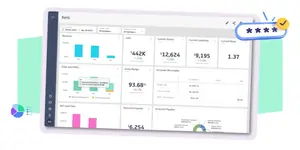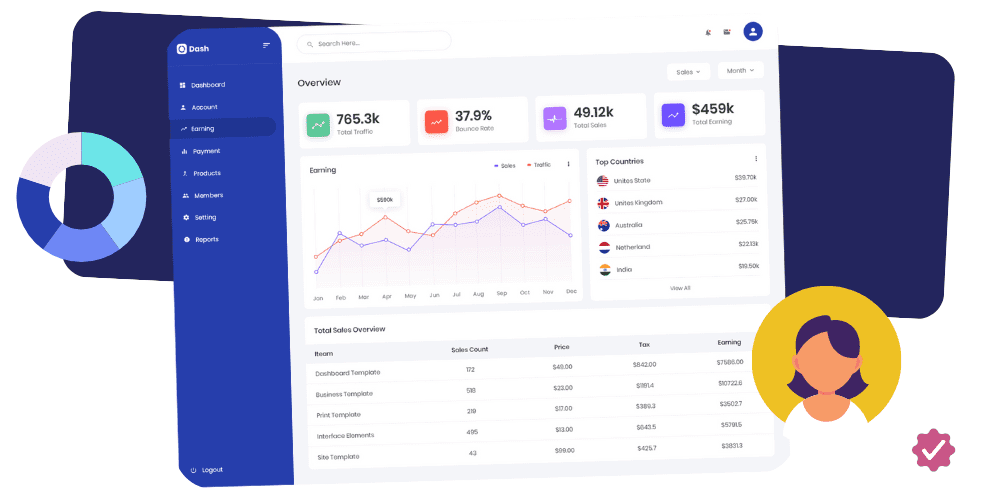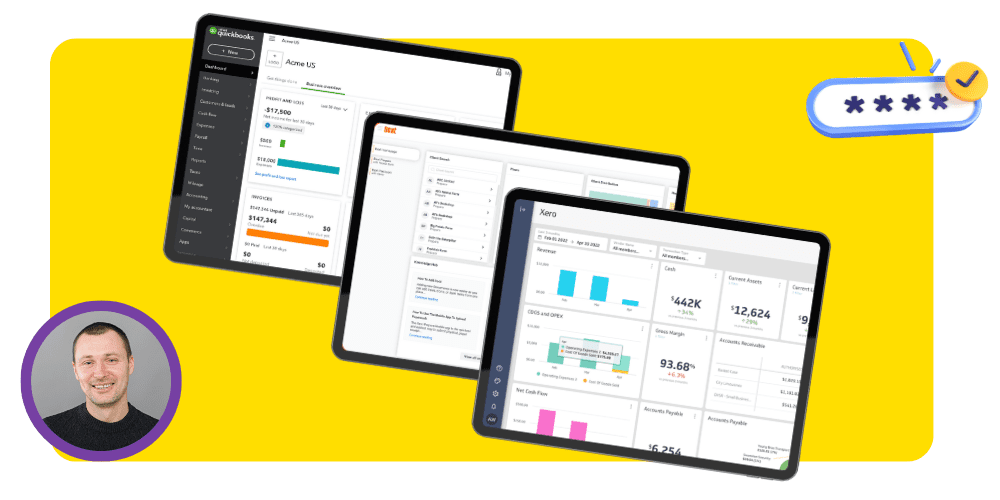Entrepreneurship is a rollercoaster of opportunities and challenges. Among the myriad issues in starting and running a startup, comprehending and taming your cash burn rate is very important for the sustainability of your business. This guide will help you understand the basics of cash burn and the importance of managing it.
What is the Cash Burn Rate? Burn Rate Meaning
Cash burn is how fast a startup is using up its cash reserves. It’s an important measure in looking at the pace with which a company is consuming its cash, usually calculated on a monthly basis. The most important thing to be vigilant about for early-stage startups— particularly those in the tech space— is managing your cash burn because it determines how long you can keep running the business before you need more funding.
Knowing your cash burn helps you get through that delicate early-stage growth of the business, it also tells you how well—or not so well—you are financially, and lets you plan for any future funding needs. In tech startups, because innovation and rapid growth can lead to large outlays, monitoring your burn rate will ensure you do not run out of cash at key moments of the business journey. This ensures that a startup has accomplished Operational Readiness and continues seeking chances for growth without difficulty.
Calculating your cash burn rate is essential for understanding your business’s financial sustainability and planning future funding needs. There are two main methods to calculate the cash burn rate: Gross and Net Cash Burn.
Discover how to get operationally ready, run your company efficiently, and explore funding options
How to Calculate Cash Burn Rate?
Steps to measure your company’s cash runway effectively
1. Gross Cash Burn Rate
This method helps you understand how long your business can operate without any incoming cash. It’s relevant whether your company has positive or negative operating cash flow.
Gross Cash Burn Rate Formula:

Example:
- Current cash balance: £800,000
- Monthly operating expenses: £160,000
- Gross Burn Rate = £800,000 / £160,000 = 5 months of runway
2. Net Cash Burn Rate
This method is used when your business is operating at a loss. It shows how long your current cash will last based on your monthly net cash outflow.
Net Cash Burn Formula:

Example:
- Current cash balance: £800,000
- Monthly operating expenses: £160,000
- Monthly revenue: £60,000
- Monthly operating loss = £160,000 – £60,000 = £100,000
- Net Cash Burn Rate = £800,000 / £100,000 = 8 months of runway
Calculating and regularly updating these rates can help you effectively plan for the future and avoid unexpected cash shortfalls.
Essential Financial Metrics for Managing Cash Burn Rate
Cash runway calculation is one of the most important ways to determine how long your startup can run without needing more money. To figure it out, divide your current cash on hand by the amount of cash you spend each month. This calculation gives you a good idea of how many months your business can keep spending the same amount of money without getting any more money or income.
For example, if your startup has £500,000 in cash on hand and spends £50,000 every month, your cash runway is 10 months. Knowing this number helps you make plans for the future and take action to get more money or change how much you spend. By keeping an eye on your cash runway on a regular basis, you can avoid being caught off guard and make smart choices about your financial future.
Financial Forecasting
Making financial predictions is a key part of controlling your cash burn rate. Guessing how much money you will make and spend in the future can help you plan your cash flow and make better financial decisions. This process examines past financial data, market trends, and growth expectations to create a detailed cash flow forecast.
Making accurate financial predictions can help you prepare for various outcomes, including the best and worst cases. Using tools and methods for forecasting can improve accuracy and give you useful information about your startup’s financial health. By making regular changes to your predictions based on actual performance, you can keep your financial plans in line with reality and quickly adapt to changes in your business environment.
How effective cash flow planning, forecasting strategies, and financial insights can drive growth and refine your business success.
Breakeven Analysis
Another important tool for controlling the cash burn rate is breakeven analysis. This metric tells you when your startup’s income and costs are equal, which means you’re neither making a profit nor losing money. Figuring out your breakeven point helps you set reasonable financial goals and determine whether your business model will work.
Find your variable costs (costs that change with production) and fixed costs (costs that don’t change with production) to do a break-even analysis. Next, determine how much money you need to make to cover these costs. When you know your breakeven point, you can figure out how much money you need to make to avoid losing money. This information also helps you set prices and create budgets.
- Optimise your pricing to boost profitability — check out our guide on effective pricing strategies for small businesses.
- An In-depth Understanding of the Types of Business Models
- Strengthen your financial planning with our In-depth guide to business budgeting.
- Zero-Based Budgeting – The spark for Innovation
Key Challenges in Managing Cash Burn Rate
A big problem for startups is that their income streams aren’t always steady. Unlike well-known businesses with a steady income stream, startups, especially those in the tech industry, often have income that goes up and down. Because of these discrepancies, it can be hard to guess how much cash will flow in the future and plan spending accordingly.
To deal with this problem, startups should use strong methods to make financial predictions. You can make more accurate revenue projections by looking at past data and market trends. Putting together a financial buffer or reserve can also help you keep running during times when you’re not making as much money.
Scaling Too Fast
Scaling too quickly is another big problem. Fast growth can be exciting, but it can also cause cash reserves to run out faster. Without a solid financial plan, startups that hire a lot of people or grow quickly may find themselves in a tough spot.
To avoid this, it’s important to find a balance between growth and financial stability. One way to effectively manage costs while gradually growing your business is to use a phased scaling approach. This strategy helps you ensure that you can keep growing without spending too much money.
- Learn how to scale wisely with our comprehensive guide to growing your business
Fundraising
For many startups, especially those in the tech industry, raising money is an important part of staying in business. However, depending on outside funding can make managing cash burn more difficult. To avoid running out of money, you need to plan your fundraising efforts so that they don’t interfere with your cash runway.
It takes careful planning to keep your burn rate in check between fundraising rounds. Coming up with a clear financial plan and keeping open lines of communication with investors can help you get through these cycles. If you know when and how to ask for more money, you can stay financially stable while working toward your business goals.
- For a clearer understanding of fundraising, familiarise yourself with fundraising terms that all entrepreneurs should know.
- To navigate each stage of fundraising effectively, explore our complete guide to series funding, from pre-seed to Series E.
Not Considering Hidden Costs
Startups often don’t see the hidden costs that can greatly affect their cash burn rate. Costs like taxes, employee benefits, and building up infrastructure may not always be clear at first, but they can add up over time.
To fix this, it’s important to carefully look over all the possible costs. When you plan your finances, including these hidden costs will help you get a better idea of how your money is flowing. You can also avoid unexpected financial stress by going back to your budget and making changes to it on a regular basis.
- Ensure you’re also up to date with tax requirements Understand your Taxes if Leaving the UK.
Keeping the budget and new ideas in check
Tech startups have a hard time finding the right balance between new ideas and limited funds. Investing in new technologies or product development can be expensive, but it’s necessary to stay competitive. The important thing is to keep an eye on these investments and not spend too much.
It is very important to make a strategic budget that includes money for new ideas and running the business. You can ensure that your spending is in line with your long-term business goals by putting projects in order of how much money they could make you back. Reviewing and making changes to your budget regularly will help you keep this balance and support long-term growth.
Practical Strategies to Reduce and Manage Cash Burn Rate
Managing and lowering your cash burn rate can be done by implementing lean operations. Lean principles are about getting the most value for the least waste. You can cut costs and improve your financial performance by streamlining processes and getting rid of waste.
First, examine your current processes to see where resources aren’t being used properly or are being wasted. This could mean improving supply chains, cutting down on wasteful costs, or automating repetitive tasks. Lean operations not only help you keep costs down, but they also make your startup more productive and flexible so it can respond more quickly to market changes.
How to Balance Fundraising and Cash Burn?
Funding is very important for startups, especially for those in the tech industry, to keep operating and growing. However, fundraising efforts need to be timed carefully to effectively manage the cash burn rate. Planning your fundraising activities around your cash runway will help you avoid running out of money, which could put your business at risk.
First, look at your current cash reserves and figure out how far you can go with your cash. This will help you figure out when it’s best to raise money. It would help if you started looking for extra money as soon as possible rather than waiting until you run out of cash. If you know exactly how much money you need and how much your business will grow, you can negotiate better terms with potential investors and avoid the stress of raising money quickly.
Telling Investors About the Burn Rate
Investors are very interested in your startup’s cash burn rate because it shows how well your business runs and how much money it loses. To effectively communicate your burn rate, you need to clearly show how you are handling your money and making plans for future growth.
Make detailed financial reports that show your current burn rate, your cash runway, and your predictions for how much money you will make and spend. Be clear about how much you’re spending and how you plan to control your burn rate to make money. Investors will feel more confident in your business if you show them how to keep costs low and operations running at their best.

Common Pitfalls to Avoid
In the early stages of a startup, hiring too many people can quickly cause your burn rate to rise too high to handle. Hiring employees before you have a steady stream of income can strain your finances and take money away from important areas like product development or marketing. With every extra paycheck, your monthly costs go up, which can be bad if you don’t make enough money to cover them.
Instead of hiring full-time workers, think about other ways to get the talent you need and keep your burn rate under control. Working with a freelancer or part-time worker can give you more freedom and save you money on certain projects or roles. They let you change the size of your workforce based on your immediate needs without having to make long-term payroll commitments. External agencies or consultants can also provide specialised skills temporarily, which can help you meet short-term needs without having to pay for full-time employees.
- To optimize your overall business operations, explore how AI can extract more value for your business and how accountants play a crucial role in this integration.
- When should you think about hiring an Accountant?
- Explore the differences between contractors and freelancers.
- Manage your costs and ensure regulatory adherence, consider A Comprehensive Guide to Payroll Compliance.
Too Much Attention on Growth
Startups need to aim for big growth, but if you only think about expanding, you might forget about making money. If you put growth ahead of financial stability, you might end up with a high burn rate and a business model that can’t last. If you don’t pay attention to managing your cash flow and making sure your startup is profitable, it could run into money problems and fail.
Recent Trends in the Technology Startup Industry
The tech startup scene changes because new trends are always coming up. One noteworthy trend is that profitability is becoming more important than growth. Investors and other important people are now putting more weight on a startup’s ability to show that it is financially stable and has a clear path to making money before they invest in the business. Because of this change, managing cash burn well has never been more important.
Another trend is the increasing importance of sustainable business practices. Environmental, social, and governance (ESG) criteria are increasingly used to judge startups. Investors want to put their money into environmentally friendly companies. This can affect how much companies spend and how they run their businesses. Startups with these values may find new ways to get more funds comparatively.
Changes in tax laws and financial rules also affect how startups handle their money. Changes to R&D tax credits or how stock options are taxed, for instance, can affect your cash flow and financial planning. By staying current on these changes, you can make the most of available incentives and stay compliant with government rules.
Changes in how venture capital funds work
The world of venture capital (VC) funding is always changing, and recent trends have greatly affected tech startups. Angel Investors and Venture Capital funding have long been a few main ways for tech startups to get the money they need to grow quickly and develop new ideas. Lately, however, there has been a clear shift toward more careful and planned investments.
Investors are paying more attention to startups that show a clear way to make money and grow in a way that lasts. This change is part of a larger trend that puts long-term financial health ahead of quick growth.
Tax laws and regulations in the UK are another area where recent changes can influence cash burn rates for tech startups. The government periodically updates tax policies that affect various aspects of business finances, including payroll deductions, allowances, and tax credits.
In the US, changes in tax regulations, such as adjustments to capital gains taxes or alterations in tax incentives for startups, can also affect your cash flow and overall burn rate. Staying informed about these changes and understanding how they impact your financial situation is essential for effective cash management.
- Explore the key differences between angel investors and venture capitalists to better understand your funding options.
- Review ‘UK Tax: A Brief Overview of Taxation in the United Kingdom‘ to understand tax impacts on startups.
- Understanding Payroll Deductions in the UK‘ to manage your startup’s financial obligations effectively.
- Explore ‘A Complete Understanding of Capital Gains Tax‘ to see how it impacts your startup’s finances.
Conclusion
The health and longevity of your startup need to know and control your cash burn rate. In the tricky world of growing a new business, keeping a close eye on your cash flow can mean the difference between success and failure. You can build a strong foundation for the future of your startup by figuring out and keeping an eye on your cash burn rate, using strategic financial metrics, and finding a good balance between growth and financial discipline. You should also always talk to your startup accountant about your burn rate and how to control it better.
Remember that controlling your cash burn rate isn’t just about cutting costs; it’s also about making smart choices that help you reach your business goals. Keeping a healthy cash flow means communicating well with investors, raising money smartly, and using useful financial tools.
By using these strategies, you can help your startup keep running and take advantage of growth opportunities without putting its finances at risk. If you stay proactive and flexible, you’ll be better able to handle the challenges of being an entrepreneur and guide your startup to long-term success.
Additional Resources
Frequently Asked Questions (FAQs)
How do I know my burn rate?
Calculate the difference between your startup’s monthly operating expenses and monthly revenue to determine your burn rate. This figure represents the amount of cash you’re depleting each month. Regularly reviewing this metric will help you understand your financial health and manage your cash flow more effectively.
What is the average monthly cash burn rate?
The average monthly cash burn rate varies widely depending on the industry and the startup stage. It can range from £10,000 to £100,000 or more for tech startups. It’s important to compare your burn rate with industry benchmarks to assess whether your spending aligns with similar businesses.
What is a good burn rate?
A “good” burn rate aligns with your startup’s growth objectives and financial sustainability. Generally, a lower burn rate is preferable as it indicates that your startup is using its cash reserves more efficiently. However, a higher burn rate may be acceptable if it supports significant growth and has a clear plan for future funding.
Can cash burn be positive?
Typically, cash burn is a negative figure representing the amount of cash being spent. However, in some contexts, a “positive” cash burn rate might refer to a situation where a startup is investing heavily in growth and innovation, expecting these investments to lead to future revenue and profitability.
What is the KPI cash burn rate?
The KPI (Key Performance Indicator) cash burn rate measures the rate at which a startup is depleting its cash reserves. It is a critical indicator of financial health and sustainability. Monitoring this KPI helps startups gauge their financial stability and make informed decisions about spending and fundraising.
How do you calculate the cash rate?
The cash burn rate is calculated by subtracting monthly revenue from monthly operating expenses. This calculation provides insight into how quickly your startup is using up its cash reserves and helps you plan for future financial needs.
What is a good burn multiple?
A good burn multiple reflects a balance between spending and growth. It is calculated by dividing your burn rate by the revenue generated. A lower burn multiple indicates efficient use of funds, while a higher burn multiple may suggest that your spending is outpacing your revenue growth.
What is the difference between burn rate and run rate?
Burn rate refers to the amount of cash your startup spends each month, while run rate is a projection of future revenue based on current performance. Burn rate focuses on expenditures, whereas run rate estimates future income. Understanding both metrics helps assess your financial health and plan for growth.
How do you stop cash burn?
Reduce unnecessary expenses, optimise operational efficiency, and improve revenue streams to stop excessive cash burn. Implementing cost-saving measures, renegotiating contracts, and enhancing your financial forecasting can help you manage and reduce your cash burn rate effectively.
What is free cash burn?
Free cash burn refers to cash outflows unrelated to core operations, such as one-time investments or extraordinary expenses. It provides insight into the non-operational aspects of cash burn and helps you understand the overall financial impact of your spending.









































































